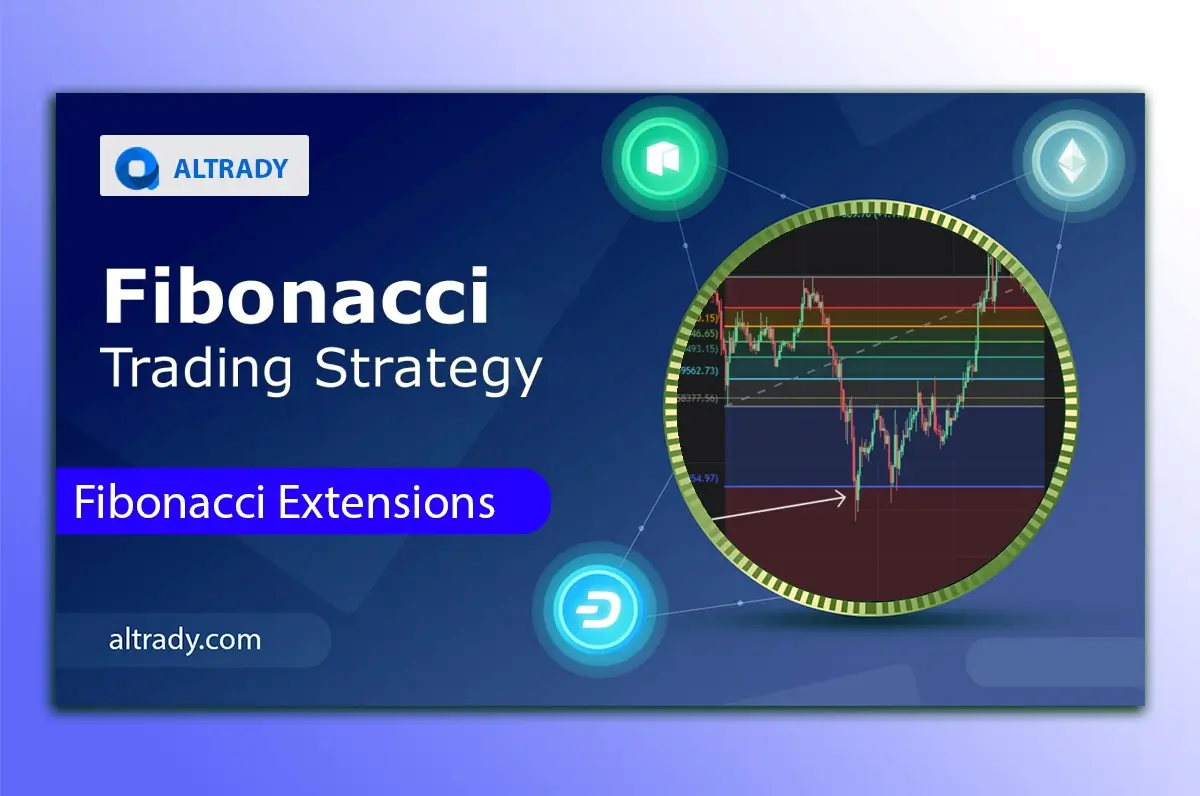Category List


Fibonacci Trading Strategy: Fibonacci Extensions
In the crypto market, employing Fibonacci extensions can be a worthy method to detect price swings taking action beyond a relevant resistance level, which can be, at the same time, spotted by the 100% fibs retracement.
In this article, we will examine these extensions, their applications in strategies like trend continuations and reversals, as well as divergences, addressing the differences with the Fibonacci retracements and how traders can use them properly.
Understanding Fibonacci Extensions
The Fibonacci tool is recognized and used by its retracement versions. However, there are also extensions to the levels of price action that traders could be analyzing primarily. These extensions go beyond the price range where the Fibonacci tool was plotted, and traders typically assume that these extended levels represent potential areas of further support and resistance where the crypto asset may reverse or consolidate
When the price goes toward these extensions, it is essentially a breakout movement of a prior resistance or support area, according to the market direction and conditions being analyzed. Traders can then use Fibonacci extension tools to project price targets beyond the retracement levels once they have identified the extension levels.
By connecting the high and low points of a trend using a Fibonacci retracement tool, traders can proceed to calculate Fibonacci extensions, after identifying significant price swings in the market.
Comparing Retracement Levels vs. Extensions
To calculate Fibonacci retracements, the most typically used levels include:
- 23.6%
- 38.2%
- 50%
- 61.8%
- 78.6%
- 100%
The Fibonacci extensions include:
- 127.2%
- 161.8%
- 261.8%
Key Differences Between Retracements And Extensions
Both Fibonacci retracements and Fibonacci extensions are based on the Fibonacci sequence. The principal difference is their application:
- In the case of retracements, they are typically used by traders to determine entry and exit points for trades within a trend. The retracement levels can be used by traders to set stop-loss and take-profit orders, as well as to identify potential levels of support and resistance.
- Fibonacci extensions, on the other hand, are used to identify potential price targets, beyond retracement levels, for a trend. Traders can use these levels to set profit-taking or stop-loss orders, as well as to identify potential areas of support or resistance for the price.
How Do Traders Use Extensions?
Traders use Fibonacci extensions in trading to identify potential price targets, as well as manage risk and reward ratios. By using these extensions, traders can set price targets for profit-taking or stop-loss orders, based on possible resistance or support levels identified by the Fibonacci extensions.
Fibonacci Extensions can also assist traders to:
- Identify price swings when the price breaks above 100%, which could be a previous high or low point in a recent trend.
- After identifying price swings, traders can use the Fibonacci extension tool to determine potential extension levels beyond the 100% retracement level, such as 127.2%, 161.8%, and 261.8%.
- After identifying potential extension levels, traders can set price targets based on these levels. If a trader is in a long position and the price is approaching a 127.2% extension level, the trader might consider taking profits or setting a stop-loss order to protect gains.
- After all that, monitoring the market is vital to see how the price reacts to the extension levels. The price may continue to trend in that direction if it moves beyond the extension level, but if it fails to break through this level, it may reverse course and move in the opposite direction.
In addition to Fibonacci extensions, Volume Indicators or Stochastic Oscillators can be used to measure the strength of the price swings, ensuring the price will move beyond the 100% retracement.

Strategies Using Fibonacci Extensions
Fibonacci can offer traders a ground to build a systematic approach to trading cryptocurrencies, which can be very unpredictable assets and can induce irrational behaviors when they cannot establish a direction but traders still try to find a trading opportunity.
Trend Trading
- Continuation: As part of a trend continuation strategy, traders can identify potential price targets and place profit-taking orders based on Fibonacci extensions. For instance, the trader places a profit-taking order at a resistance level beyond the traditional retracement level if a price is trending upwards.
- Reversal: In addition to identifying potential support or resistance areas for a trend reversal, traders can also use Fibonacci extensions, for example, to set buy orders at levels beyond traditional retracement levels if a price is trending downward, expecting an upside move.

Trading Divergences
To identify potential divergences between price and technical indicators, traders can use Fibonacci to look at an extension level where the price action could differ from an oscillator indicator.
For example:
- Using RSI: If the price is making higher highs while the RSI is making lower highs near the 127.2% level, then that could be a signal to take a short position.
- Using the MACD: If the price moves towards the 127.2% and 161.8% levels while the MACD is continuously moving lower, then a divergence may emerge, indicating a sell signal.

Fibonacci Extensions: Exploring Possibilities
The following are possibilities that can be accomplished using Fibonacci extensions:
Detect Resistance Levels
Extensions can be a tool to spot reliable zones of resistance, which means where supply is likely to take action.
For example:
- A 127.2% level could be in confluence with an ICT order block.
Confirm Retracement Breakout With Other Indicators
If the price breaks through the 100% retracement to a Fibonacci level, there is a chance it could rapidly reverse and turn into a false breakout. Traders can use additional technical tools like volume indicators to measure the breakout strength.
- Using Volume: If the price surpasses the 100% level with increasing volume, it means the breakout is effective. Otherwise, a decreasing volume will indicate no new trades are entering the market and the price could fail to move beyond.
Conclusion
Fibonacci extensions, likewise the retracements, are valuable tools to address, and analyze trending markets. Particularly, extensions serve to detect resistance after a price swing beyond the 100% retracement level.
In this article, we explore different possibilities and applications alongside strategies based on trend continuation and trend reversal, as well as divergence and how RSI and MACD play a role in that case. In Altrady you can use the Fibonacci tool on paper trading for free during a free trial account.